






THE UCP GOVERNMENT TARGETS SCHOOL LIBRARIES

GOODIES ON THE GO PORTABLE SNACKS FOR STUDENTS
ABORIGINAL ART ORIGINALS AVAILABLE LOCALLY
COUNTRY CRAFT FAIR THE UNOFFICIAL CHRISTMAS KICK-OFF
JOANNE GUTHRIE THE ART OF THE WELD

There are many situations where you may be liable for damage caused to others. Liability insurance provides coverage against such situations. Here are some answers to your most frequently asked questions.
1. What is liability?
If you’re involved in a loss or collision, a victim or victims may hold you accountable for the damage caused and ask for compensation. In the case of events causing major damage or bodily injury, the amount claimed may be extremely high. For example, if a fire breaks out in your home and spreads to your neighbours’, their insurer may demand that you refund the amount they paid out in compensation.
Liability insurance protects you from financial consequences for which you may be held responsible. If you’re found liable, it generally covers your defence expenses and, if necessary, compensation for the person suing you.
2. Is liability insurance mandatory?
In Canada, the law requires all owners of a motor vehicle to have liability insurance that’s valid in Canada and the United States. The law doesn’t require owners and renters of residential buildings to have liability insurance.
3. What does liability insurance included with auto insurance cover?
Damage to other people’s property is also covered, for example, if you lost control on a slippery road and damaged someone’s fence. It also covers injuries to other people who aren’t already covered by a public insurance plan.
4. What does liability insurance included with home insurance cover?
It protects your home, your belongings and the members of your family against unexpected events. For example, strong winds causing your garden furniture to blow away and break a window on a neighbouring property, or your pet biting a delivery person.
5. How much liability insurance do I need?
The minimum amount of coverage offered with home insurance is usually $1 million. But it may vary, and you could need more, depending on your situation.
6. Does liability insurance provide coverage outside Canada?
Liability insurance included with home insurance follows you wherever you go. So, if you rent a vacation home in Mexico and cause water damage because you forgot to turn off the tap, your insurer will cover the claim.
The coverage included with auto insurance is only valid in Canada and the United States.
7. What’s NOT covered by liability insurance?
Some types of damage aren’t covered, like any damage caused intentionally or resulting from criminal activity on the part of the insured person.
Interested in learning more about liability insurance?
Give me a call – and, for more helpful prevention tips, visit desjardins.com/en/tips.html


Jennifer Miles, Agent 125-15 Circle Dr
St. Albert 780-460-2279
jen@jmilesinsurance.com jmilesinsurance.com
MBroadbent Insurance Agency Inc.
Michelle Broadbent, Agent 3523 Tudor Glen Market
St. Albert 780-470-3276
michelle@michellebroadbent.com michellebroadbent.com



T8N MAGAZINE VOLUME 12 ISSUE 4 September 2025
PUBLISHER EDITOR
Rob Lightfoot Gene Kosowan
DESIGN & PRODUCTION MANAGEMENT
Isaac White
PHOTOGRAPHY
Stephanie Cragg, Gloria Ge-Weald, Paula E. Kirman and Carey Amato Books: Henry Holt & Company, HarperCollins, Simon & Schuster, Top Shelf Productions and Penguin Random House Adobe Stock images: 365mm/Stocksy, lapeepon and Viktoriia (Generated with AI)
CONTRIBUTORS
Stephanie Cragg, Gloria Ge-Weald, Paula E. Kirman, Gene Kosowan, Tom Murray
OFFICE MANAGER
Janice Lightfoot
CONTRIBUTING AGENCIES
Adobe Stock
ISSN 2368-707X (PRINT)
ISSN 2368-7088 (ONLINE)
For editorial inquiries or information, contact T8N magazine at info@t8nmagazine.com. Have something to say? Letters, suggestions or ideas can be sent to letters@t8nmagazine.com
FOR ADVERTISING INFORMATION
Rob Lightfoot rob@t8nmagazine.com
780 940 6212 or visit t8nmagazine.com
T8N magazine is published 5 times a year by T8N Publishing Inc. Copyright ©2025 T8N Publishing Inc. Reproduction in whole or in part without permission is strictly prohibited.
Content marked by the Sponsored Content icon was produced in partnership between content producers and T8N magazine.
PRINTED IN CANADA
T8N PUBLISHING INC
PUBLISHER & PRESIDENT
Rob Lightfoot: rob@t8nmagazine.com
Mailbox #215, 3-11 Bellerose Drive, St.Albert T8N 5C9


CONNECT WITH US /t8nmagazine


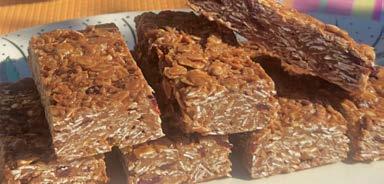
The Alberta government cranks the heat on what’s allowed in school libraries
Welder Joanne Guthrie is getting her name out in the metal art field
Student Snacks
Portable goodies to kickstart the school year
Indigenous Appreciation
Aboriginal art offers additional insight into unique cultures
23
Crafty Creations
A local arts event kicks off the Christmas shopping season
26 THEN & NOW
Assimilation Atrocity
How two local residential schools contributed to a dark period in Canadian history
28 STYLE IN TRANSITION
Relocating her salon has expanded Thyda Lim’s clientele
30 GET
This candy contest comes with a weighty query
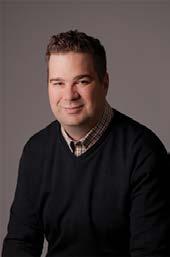
WHILE MOST OF us like to believe that our education system successfully delivers all the basic tools students need to prosper in life, the UCP government has recently chosen schools as battlegrounds to stage a culture war targeting more marginal youths. In its crosshairs is a 2SLGBTQ+ contingent vulnerable to legislation designed to eliminate students’ use of pronouns, punish teachers who look the other way, and reduce access to sex education.
The latest attack involves “guidelines” to strip Alberta school libraries of four books–including some geared towards 2SLGBTQ+readers–containing sexually explicit material the government deems harmful to youths. While the government denies the action, which comes into effect Oct. 1, is an outright ban, literary experts declare it’s no accident that these books are on the firing line. The conflict unfolds on page 5.
While on the topic of education, the National Day for Truth and Reconciliation on Sept. 30 will remind us of the horrors surrounding the Residential School system that resulted in the deaths of some 6,000 indigenous youths and ruined the lives of countless more. We chronicle our region’s contribution to the atrocity on page 26.
But the focus on this edition of T8N isn’t entirely serious. Some bright spots to check out include a profile on artist-welder Joanne Guthrie (page 10), unique school snacks (page 14), aboriginal art available to consumers (page 20), the upcoming Country Craft Fair (page 23), and the launch of Paralela Beauty (page 28).
Enjoy the read and to all the parents out there, here’s hoping your child’s back-to-school experience is a pleasant one. t8n

I’m writing to express my deep disappointment in your recent decision to feature Yeezy merchandise (Adidas Yeezy slides; July 2025 issue of T8N Magazine; page 18), where they were presented as a product available at ABco at 107-150 Bellerose Dr.
Given Kanye West’s well-documented record of espousing antisemitic, racist, and openly pro-Nazi rhetoric, this decision is deeply troubling. In recent years, Kanye West has deliberately and repeatedly promoted hate, including public praise for Adolf Hitler, the use of Nazi symbolism, and inflammatory antisemitic remarks that have caused real harm.
These are not isolated incidents, nor misunderstood comments. They represent a consistent and dangerous ideology that has been condemned widely and
The Alberta government denies that the recent removal of four graphic novels from school libraries across the province is a book-banning initiative. However, on page 5, education and literary experts say otherwise, stating that the move is yet another step to further marginalize vulnerable members in our communities.
unequivocally. In fact, Adidas itself severed all ties with Kanye West in 2022 because of these views and the public backlash they generated, so even the product you are advertising is from a stock that ended in 2022-23.
By featuring and promoting products associated with Kanye West, you risk sending a message that such hate-fueled rhetoric can be not only ignored but promoted. This is not a matter of fashion, trend or “festive finery”; this is about the responsibility that local businesses carry when it comes to what they choose to amplify and normalize within our community.
St. Albert is a diverse, thoughtful, and inclusive place and I expect the businesses I support to reflect those values, not undermine them. T8N, I hope you will be printing a retraction and acknowledgement.
Sincerely,
Andrea Cairns

The Alberta government cranks the heat on what’s allowed in school libraries
BY: TOM MURRAY

FOR TONI SAMEK, the writings of Judy Blume were an important part of growing up.
“I’d say that those were probably the first books I could get access to information that I needed at the time,” says Samek, Professor at the School of Library and Information Studies at the University of Alberta. “Just as important was the sense of privacy, which was so important to me.”
When they first started appearing in the ’60s and ’70s, Blume’s young adult fiction was eagerly snapped up by kids who finally found storylines touching on topics that they themselves were first encountering. Sex, menstruation, masturbation, forbidden subject matter that many parents found uncomfortable discussing. The banning of those books in some U.S. school districts followed a few years later. Little wonder that Samek, who is also Scholar-inResidence at the Centre for Free Expression at Toronto Metropolitan University, is alarmed at the announced Alberta government guidelines for “age-appropriate” books in the provincial school system.

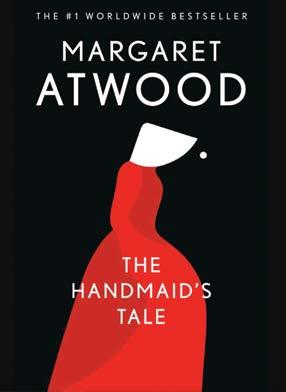



Since the late spring, the four graphic novels that set off this kerfuffle were Gender Queer by Maia Kobabe, Fun Home by Alison Bechdel, Blankets by Craig Thompson and Flamer by Mike Curato. The protagonist of Blankets is straight and questioning his Christian upbringing, but the main characters in the other three graphic novels are 2SLGBTQ+ youths. All four have fallen afoul of the government’s directive that explicit sexual content including masturbation, penetration, and ejaculation, cannot be accessible to students in any grade.
According to Education and Childcare Minister Demetrios Nicolaides at his May press conference where he announced new guidelines and the initial banning from schools, the preliminary approach came from concerned parents. A number of right-wing advocacy groups were quick to celebrate, and a number of skeptics were just as quick to investigate. Connections between the government list and U.S. advocacy groups like Moms for Liberty were drawn by organizations like the Investigative Journalism Foundation.
The government solicited responses to a survey on the question of what is believed acceptable for school library collections. On June 10, that survey was completed and posted online. Turns out that “sixty-one per cent of respondents said they have never been concerned about a book in a school library being inappropriate for a certain age group due to sexually explicit content.”
Despite those results, the government remains adamant in pushing the directive. “I think it’s important that we make sure
that young children are exposed to age-appropriate material only and that they’re not exposed to pornographic images early,” noted Premier Danielle Smith during a province-wide radio program a month after the survey’s findings were released.
The government wants school libraries to remove sexually explicit materials by Oct. 1. School boards must also reveal their criteria for reviewing and selecting books by Jan. 1.
“There’s an attempt to scare parents into thinking that there’s porn in libraries,” says Samek. “And there’s this conflating of students from Grade One to Grade 12 with the word children, when, of course, there’s different ages, and kids have the right to full development. School libraries serve a wide range of readers, and it’s about supporting literacy in all its forms, and the free development of personality. So, it seems like a real attack to me, on a feminized profession and a profession that supports free and equitable access to information for everyone.”
Including access to information that would be of use to 2SLGBTQ+ students who might be grappling with their identities. The UCP government is insistent that they aren’t banning books as the removal of such writings will only take place in the school system.
“This was never about erasing particular narratives from school libraries,” Nicolaides said at the May conference. “This is simply about ensuring young students are not exposed to content depicting oral sex, child molestation or other very inappropriate content.”
But St. Albert Public Library CEO Peter Bailey is somewhat skeptical. He also notes that of all the books to remove, Nicolaides has chosen four that are very highly regarded.
“They’re all award-winning, well-reviewed, critically acclaimed books,” he says with some bemusement. “You know, the right book at the right time for the right person is the key. I don’t think any of my colleagues in school libraries or anywhere would say these four titles are appropriate for elementary school kids. These are young adult, coming of age novels and memoirs appropriate for high school kids and adults. But high school kids, teens are going through a lot, and books are really helpful for young people in getting through the changes that are happening to them as teens.”
Bailey and Samek both feel that this all relates as well to the underfunding of school libraries, lamenting the loss of possible educational and mentoring opportunities. Samek, who has been following the controversy in Toronto and keeping track of media coverage, also notes that it’s been getting a great deal of attention in other parts of Canada and the world. For some it’s a matter of concern, for others a test run. Samek wants to see it nipped in the bud as quickly as possible.
“Some of my American colleagues have been sharing their best advice because they’ve been in this fix for some years now,” she says. “There was a concern that this ministerial order was even more extreme than a lot of the examples in the US. So not only has the minister taken us up as the precedent-setting case in Canada, he’s taken it to such an extreme, which, of course, is why it’s getting so much reaction.”
Both Samek and Bailey, who—at this writing—is retiring at the end of August, aren’t against parents taking an interest in what their children are reading. They’re also quick to point out that none of the books singled out by Minister Nicolaides in his May press conference is required reading at any school. As they point out, these books are simply there for young adults to read if they feel so compelled.
The government points out that public libraries will not be affected in any of this, and a call to the St. Albert Public Library verifies this. Three of the four books are available at the library, and there have been no complaints made. But Bailey and Samek see this as along the lines of the thin edge of the wedge, and a direct attack on their chosen profession.
Bailey himself is even amused to see this focus by the government on books, and especially the power of books. How they can inform, but also empower and change perspectives.
“Can you think of a better way of encountering difficult topics and discussing it than with a knowledgeable adult in a great, supportive atmosphere like a school library? I would want my kids to learn about things in that kind of environment, so in a better world we’d have more fully staffed school libraries where expert staff would have the time to really dig into these topics with kids.” t8n
Can you think of a better way of encountering difficult topics and discussing it than with a knowledgeable adult in a great, supportive atmosphere like a school library?
St. Albert Public Library CEO Peter Bailey
Of course you realize, this means war.
If the opponents of Danielle Smith and her government in the great book ban clash of 2025 didn’t outright utter Bugs Bunny’s timeless words, they certainly were thinking it. Rather than fight it out through the media, staff at the Edmonton Public School Board decided to take a different tack, following the school ban directive to the letter.
After all, the ministerial order stated quite clearly: “The school authority must not select for inclusion in a school library, or make available to any children or students in a school library, materials containing explicit sexual content.”
So, they diligently drafted a list of books verboten to kids that included George Orwell’s 1984, Ayn Rand’s Atlas Shrugged, and most hilariously, Peter Benchley’s shark potboiler, Jaws. Margaret Atwood’s classic The Handmaid’s Tale was also thrown on the list, attracting the ire of the Canadian literary icon. Smith expressed exasperation with the pushback, calling it “vicious compliance.”
On Sept. 2, a fuming Alberta government paused the initial order and quickly went to work updating it so that Benchley, Orwell, and Maya Angelou could be spared. Six days later, the order was revised so that “updated standards prevent misinterpretation and ensure that restrictions focus specifically on materials with explicit visual depictions of sexual acts.”
To sum up, high school kids were still allowed to enjoy the objectivist-flavoured sex scenes in Atlas Shrugged, but the original four graphic novels that kicked this off remained verboten in schools. So it stands, for now.
For decades, authorities in Canada have challenged a number of published books to be censored or removed from public libraries–school or otherwise. And nearly 30 of these works have been highlighted in a list compiled by the Book and Periodical Council and organizers of Freedom to Read
Week. Here’s a look at what’s been included:
The Handmaid’s Tale by Margaret Atwood
Bridge to Terabithia by Katherine Paterson
The Harry Potter series by J.K. Rowling
The Holy Bible
Star Wars: A New Hope by George Lucas
The Wars by Timothy Findlay
Essex County by Jeff Lemire
A Clockwork Orange by Anthony Burgess
Snow Falling on Cedars by David Guterson
His Dark Materials trilogy by Philip Pullman
The Goosebumps series by R.L. Stine
On the Banks of Plum Creek by Laura Ingalls Wilder
The Adventures of Huckleberry Finn by Mark Twain
The Best of Drawn & Quarterly edited by Chris Oliveros
Flowers for Algernon by Daniel Keyes
To Kill A Mockingbird by Harper Lee
The Catcher in the Rye by J.D. Salinger
Lives of Girls and Women by Alice Munro
The Giver by Lois Lowry
Princess on the Brink by Meg Cabot
Foxfire by Joyce Carol Oates
The Apprenticeship of Duddy Kravitz by Mordecai Richler
The Diviners by Margaret Laurence
Lord of the Flies by William Golding
Hold Fast by Kevin Major
Underground to Canada by Barbara Smucker
Gossip Girl by Cecily von Ziegesar
Of Mice and Men by John Steinbeck
(Source: CBC)


Welder Joanne Guthrie is getting her name out in the metal art field
BY: GENE KOSOWAN | PHOTOGRAPHY: JOANNE GUTHRIE


JOANNE GUTHRIE DIDN’T need a magic wand to realize her dream of becoming a full-time artist. A welding rod was enough to do the trick, enabling the St. Albert resident to work in her favourite medium.
“Honestly, I love working with metal,” said Guthrie. “It’s so fun, and so hard, but you can transform it into so many different things.”
What she’s transformed with that material is limited only by her imagination. Relying on mostly scraps, Guthrie has created everything from creating monolithic-like installations to wire sculptures, many of which have graced galleries and public spaces. Recently, those eclectic efforts were on full display at her exhibition, “Elemental Daydreams,” which ended a threemonth run at Stony Plain’s Red Brick Common in January.
Also earlier this year, Guthrie’s work shared space with installations from five other female artists in the lobby of Edmonton’s Walterdale Theatre during the Skirts Afire festival in March. She’s been especially prolific the past few years with landing exhibition dates at the VASA Gallery in St. Albert as well as The Carrot, the Deep Freeze Festival, the Bleeding Hearts Gallery, NextFest, and various public library locations in Edmonton. Through it all, Guthrie admits that inking those squares on her calendar have demonstrated that beating the promotional bushes has been every bit as vital as the effort she puts into her craft.



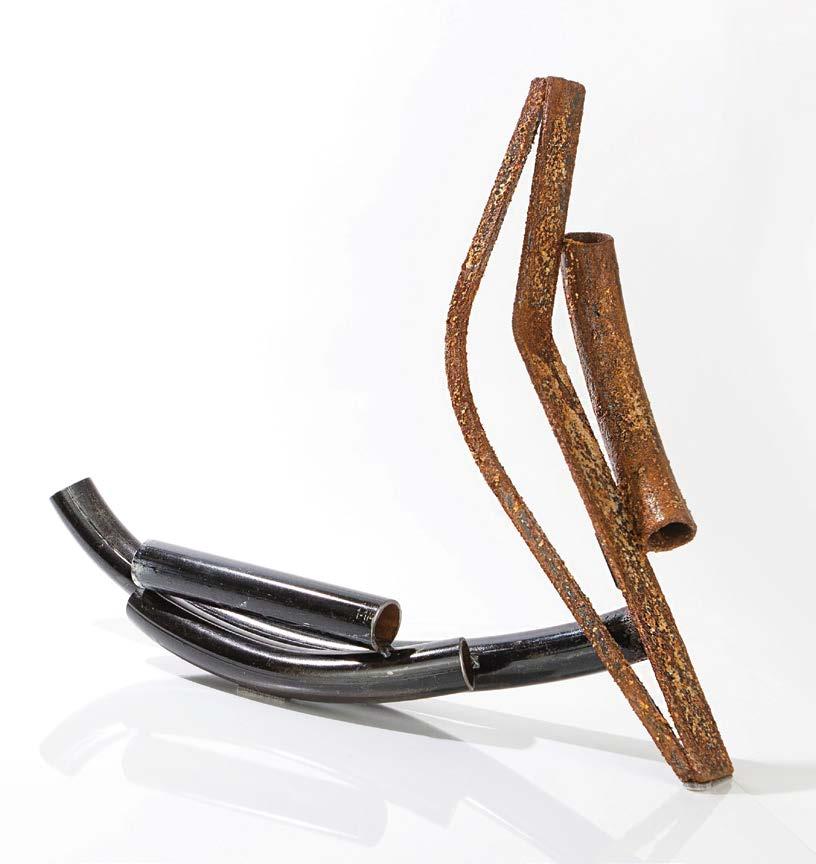
“I love creating things but it’s not always the art that stands out,” said Guthrie. “You still have to be able to get it in front of people. You just have to learn how to put yourself out there, and some people are a little afraid of that.”
That includes underscoring the subtleties of the messages inherent in the pieces she creates. For more than a decade the notions of eco-consciousness and sustainability have been top of mind for Guthrie, a strong advocate of environmental awareness and the need to recycle materials. The materials she uses are recycled, her way of demonstrating how discarded items can enjoy additional uses while reinforcing her belief that art and industry can be connected.
It’s a philosophy Guthrie has embraced for years and one that will be incorporated into her latest project, Occupying Space, consisting of discarded plastic items she’s collected the past six years. She’s also working with Edmonton Area Land Trust, an organization geared towards converting donated property back to its natural origins.
“People who have land donate it to them and they put it back to how nature used to be,” said Guthrie. “They take down all the barbed wire and let it go back to nature. I’m doing sculptures, tapestries and stuff using invasive plants and the barbed wire.”
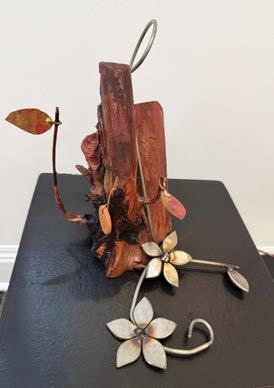

Guthrie’s artistic skills aren’t limited to welding sculptures. She also loves to draw, and when it comes to materials, she makes her own ink from berries, uses charcoal from her firepit and even makes her own paper for her drawings. Pretty much everything she does stays within the lines of her ecological and sustainability mindset.
“So, if I was stripped of everything, I can still make art, because I can go into my backyard and collect berries or grab clay from the side of a river bed,” she added. “The earth provides us with so many things, it’s so amazing, I just love being able to make things from scratch. I love that.”
Guthrie has had a creative bent dating back to childhood, and wanted to pursue that as a career path while in high school.
“I actually wanted to become an artist, but I really didn’t have
the grades to go to university,” she recalled. “Welding was the next best thing, because eventually I wanted to use it in my mediums, so I thought I might as well learn.”
Before long, Guthrie received her journeyman’s ticket and a Grade B pressure welder’s certificate and managed to get work in the oil and gas industry. Financially, she made a comfortable living for herself and family, but realized the profession didn’t exactly satisfy her craving for what she really wanted to do.
“The work-life balance wasn’t there and I wasn’t as passionate,” noted Guthrie. “There were lots of hours. You’re working all the time. It was crazy, but the money was good. It got to a point where I realized this was not my dream life.”
In 2013, she formed her own company, first contracting herself out to work on refineries, while spending whatever down time transitioning towards pursuing her craft full-time. “It’s not that easy to become an artist,” said Guthrie. “The arts world is completely different. To go from working as an industry person, like you’re behind a welding screen for 24 hours, to actually learning to use a computer, how to apply for gigs, writing an artist statement. I have learned so much in the last 10 years.”
Fortunately, these learning experiences, as hard as some of them may have been, didn’t dissuade Guthrie from the joy of transforming a piece of scrap metal into an item that’s more visually appealing. “It’s fun to make it into something that’s actually beautiful.” t8n


BY: GLORIA GE-WEALD | PHOTOGRAPHY: GLORIA GE-WEALD
SEPTEMBER IS A month that feels like it rides on the coattails of intense August, still touched by the height of summer saturation, and yet, it also brings with it a sense of responsibility. Warm, breezy and, eventually, crisp and cool, let these healthy, kid-friendly sweet recipes be a segue between fun summer energy and the fresh-faced learning of fall.

As quick as can be to make, seriously addicting, and with a long, refrigerated shelf life, these granola bars far outshine anything store-bought. This recipe calls for half honey and half maple syrup as its sweeteners, but you’re welcome to only use one or the other if that’s what is on hand. Please note, though, that by using all the maple syrup, you may end up with a harder final bar. Be careful not to overheat the syrup before pouring.
2 c. rolled oats
1/4 c. honey
1/4 c. maple syrup
1/2 c. cashew butter
1/4 c. mini chocolate chips
1/4 c. chopped, unsweetened dried cranberries
1/4 tsp. sea salt
Measure the oats into a medium mixing bowl. Chop the cranberries and add them, as well as the chocolate chips and sea salt, into the oats.
Mix. Measure the cashew butter and set aside.
Add the honey to a small sauce pan. Once the honey has started to warm, add in the maple syrup.
Keep a close eye on it—as soon as this mix bubbles, pour it into the mixing bowl, add in the cashew butter and stir.
The heat of the honey/maple syrup blend will help everything mix very easily.
Once mixed, press into a parchment paper-lined, 9x9 baking dish. Lightly greasing the dish will help the parchment stay in place.
Pour mixture into the dish and evenly press it in firmly, then chill in the fridge until cooled completely.
These keep well in the fridge for two weeks and also freeze very well!

A simple, school-friendly take on the classic peanut-butter cookie. These are so tasty that whoever is eating them won’t even realize just how wholesome they are!
1 365ml jar cashew butter
1/2 c. + 1 tbsp. coconut sugar
1/4 heaping tsp. sea salt
1/2 tsp. baking soda
1 tsp. vanilla extract
2 eggs
Preheat oven to 350°F.
In a mixing bowl, combine all ingredients until the dough is well mixed and sticky.
Line a cookie tray with parchment paper.
With wet hands, roll the dough into tablespoon-sized balls. The water helps to prevent the dough from sticking to your hands, so you’ll have to continue wetting them as you go.
Gently press the balls down into circle shapes. If desired, make a criss-cross pattern atop them using a wet fork.
Bake for 8-10 minutes and let cool completely before moving.

Unlike the cashew butter cookies, you can certainly tell that these are wholesome! Yet they are so comforting in their flavour, texture and nourishment that they’ll be a hit for all ages. Dense from the fresh carrot, oats and walnuts and bright from the cinnamon and apple, this treat perfectly expresses a fresh start to the fall.
1.5 c. oat flour or ground oats
1/2 c. coconut sugar
1/4 c. melted coconut oil
1/2 c. unsweetened apple sauce
1.5 tsp. cinnamon
1/4 tsp. sea salt
1/2 tsp. baking soda
1 tbsp. apple cider vinegar
1/2 c. shredded, slightly pressed apple
3/4 c. shredded, slightly pressed carrot
1/4 c. chopped walnuts
Preheat oven to 350°F.
If starting with whole oats, grind them to the desired consistency. Add the ground oats to a bowl, followed by the remaining dry ingredients.
Next, add the vinegar. This will cause a reaction to fluff up the batter.
Fold in the shredded apple and carrots, then add the walnuts.
The batter will be very thick. Using a 1/4 cup measure, scoop the batter into your paper or silicon-lined muffin tin cups.
Bake for 25-30 minutes. Let cool before serving.
Something about the combination of chocolate and sea salt shouts luxury from a cliff-side, while chocolate and almond butter exemplifies satisfaction. The three together—richness in muffin form. And squeezing a serving of vegetables into it, too—brilliance!
1 c. almond butter
1 + 1/4 c. shredded zucchini
3/4 c. coconut sugar
1/3 c. cocoa powder
1/4 heaping tsp. sea salt
1/2 tsp. baking soda
1 tsp. vanilla extract
2 eggs
1/3 cup mini chocolate chips
sprinkles of sea salt as garnish
Preheat oven to 350°F.
Squeeze the liquid out of the shredded zucchini using a dishtowel or paper towels. Add the zucchini to a large mixing bowl, followed by all remaining ingredients except the chocolate chips.
Once the batter is thick and thoroughly mixed, fold in the chips.
Using a 1/4 measuring cup, dollop the batter into paper or silicon-lined muffin tins.
Bake for about 25 minutes and let cool completely before serving. Store in the fridge for up to five days.

An inventive way to get some potassium in for those who tend to dodge the browning yellow fruit! Move over banana bread, there is a much quicker and easier way to utilize those ripe bananas!
1/2 banana salted butter to taste almond butter to taste honey to taste 2 slices of bread
Butter the bread on both sides, then spread the almond butter on top of the butter on both sides.
Spread honey on one of the pieces of bread.
Slice the banana and place the slices on top of the piece of bread without the honey on it, covering the whole slice.
Place the two pieces of bread together and slice diagonally using a bread knife.

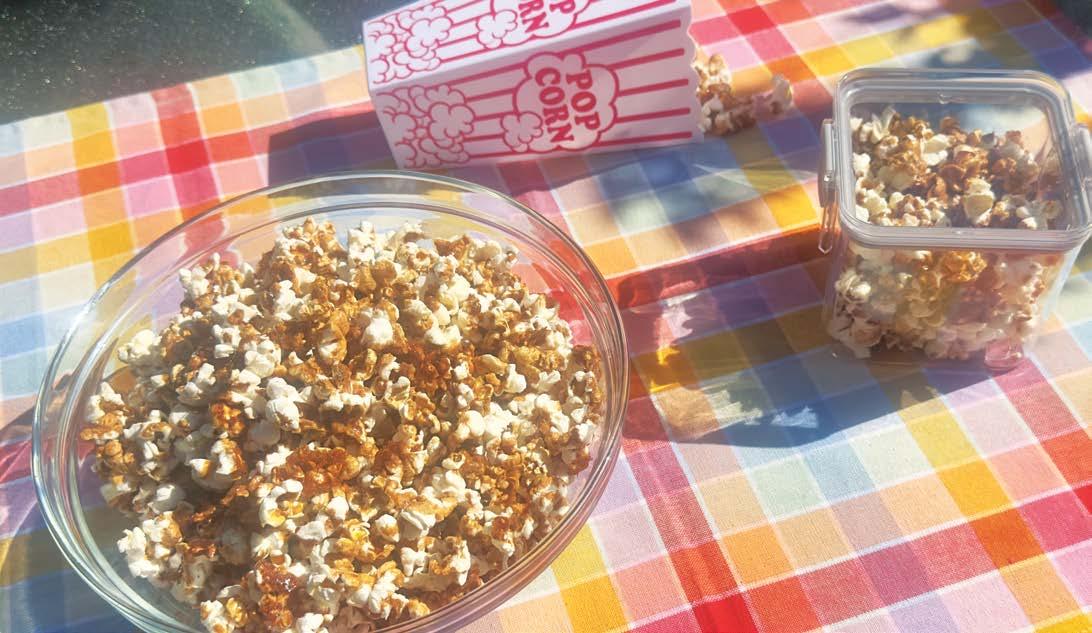
With a texture like sweet ’n salty kettle corn, and just as difficult to stop eating, this wholistic version of caramel popcorn will impress anyone who gets a bite. That is, if you have any left to share! If you prefer a fully-coated—instead of gently coated—outcome, reduce your kernel amount to 1/2 cup. But I warn you, fully-coated is intense! The gentle approach brings the flavours to a balance.
coconut oil, if stovetop popping the corn
3/4 c. popcorn kernels
1/2 c. butter
1/2 c. maple syrup
3/4 tsp. sea salt + extra to taste
1/4 tsp. baking soda
2-10 dashes of cinnamon (to taste)
Preheat oven to 225°F.
If popping the corn on the stove, heat the oil in a stockpot. Once it’s hot, add a few kernels to the pot. Once those pop, add in the rest of the kernels and swish them around until they’re coated in the hot oil.
Get a lid ready. Once the kernels start popping a lot, put the lid on and shake every 20 seconds or so, leaving the lid open a crack when it’s sitting on the stove, to let out the steam.
Once all the kernels have popped, transfer the popcorn evenly onto a parchment-lined cookie sheet, making sure to remove all burnt or un-popped kernels. Sprinkle with sea salt to taste.
Slice the butter so that it melts more quickly and place it in a tall-sided pan on medium heat.
Once the butter is melted, add in the sea salt and baking soda, followed by the maple syrup. Keep a close eye on it; once the mixture comes to a boil, pour it evenly over the popcorn and place the sheet in the oven for 45 minutes.
Stores very well for up to a week!
BY: STEPHANIE CRAGG PHOTOGRAPHY: STEPHANIE CRAGG AND CAREY AMATO

WHEN YOU PURCHASE a creation from a local indigenous artisan, it’ll be for more than just an appreciation for art. It’s an opportunity for you to learn about the history of First Nations, Metis and Inuit cultures, and that involves recognizing their history, beliefs, struggles and successes. Any of these items that adorn your wall or credenza isn’t mere eye candy, but the result of a great deal of inspiration and emotion that went into that art.
The pieces showcased in this section illustrate those motives. For example, “Sweetgrass Pony” honours the spiritual connection between indigenous people and the horse, while “Porcupine Smudge Tray” pays tribute to the smudging ceremonies conducted for cleansing and healing.
With Sept. 30 marking Truth and Reconciliation Day, we deemed it appropriate to display a few examples of aboriginal art that may go a long way towards more understanding of

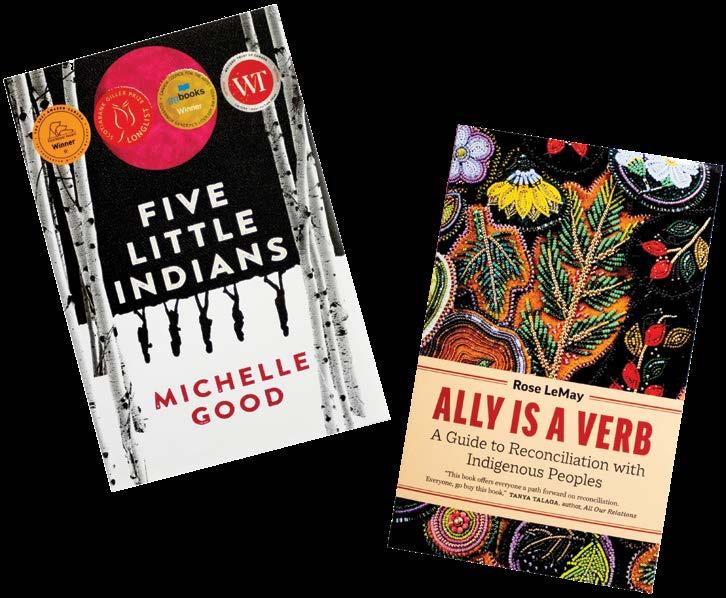


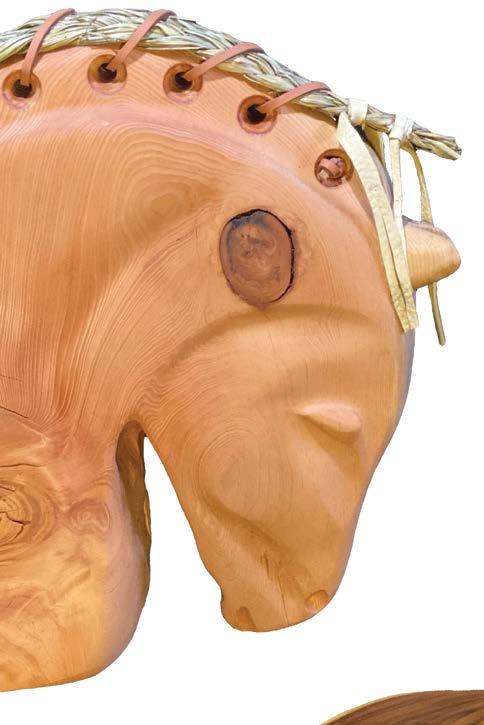


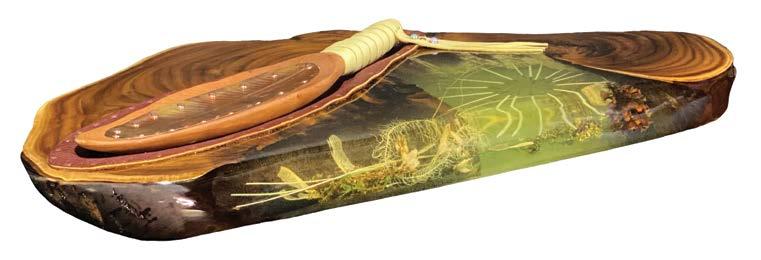
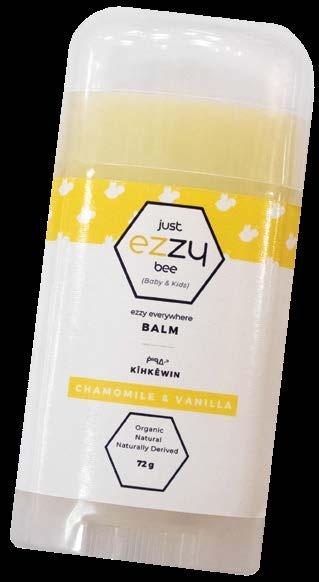
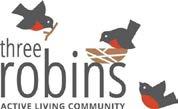

Three Robins Riverside in St. Albert 55+ Rental Apartments | Immediate Occupancy
Tailored senior living with freedom and flexibility. Stylishly crafted suite ranging from 641 to 1387 sq. ft. offering access to exceptional resort style amenities.
Suite features:
-Oversized Low E 366 Windows
-Quartz Counter-tops
-Stainless Steel Upgraded Appliances
-In suite laundry with full sized washer & dryer
-Walk through closets
-Tiled showers in all suites with most suites having a 2nd bathroom with bathtub
-Modern style cabinetry
-Private balconies with glass panel
-aluminum rails
-Upgraded sound proofing
-Luxury Vinyl Plank Flooring

Building Features:
-Controlled access entry doors
-Safe & Secure video monitoring
-Underground Heated Parking and Surface Stalls
-Additional Storage Available
-Expansive community
demonstration kitchen
-Hobby Shop
-Games/Party Room
-Cardio/Movement Studio
-Theater Room
-Crafts/Fabric arts room

BY: GENE KOSOWAN | PHOTOGRAPHY: ST. ALBERT PLACE VISUAL ARTS COUNCIL
FROM
surrounding human evolution to figuring out the Marvel Cinematic Universe saga, determining timelines can be a bewildering task. But when it comes to pegging the start of the Yuletide shopping season, artistic folks in St. Albert have no problem establishing such a date.
To wit, the movers and shakers on the St. Albert Place Visual Arts Council (SAPVAC) gladly point to the third weekend in November as the launch of that seasonal safari, in the form of its annual Country Craft Fair, occupying St. Albert Place at 5 St. Anne Street for two days.
“I think it kicks it off,” said Sandra de Medeiros, vendor organizer of the fair which this year takes place Nov. 16 and 17. “It’s still after Remembrance Day, which a lot of people like. It’s not right after Halloween, when every other crazy place start doing shows and putting up Christmas decorations.”
That said, de Medeiros added that the fair isn’t strictly a holiday season event, despite a myriad of goods available to enhance that spirit of giving. “You can get a lot of great gifts at all kinds of different price points. It’s really a show for everyone, and we see people come in time and time again every year. They have specific vendors that they love, and the new vendors also seem to do well.”
The draw for up to 3,000 patrons who check out the fair each year is the wide array of items up for sale, all of them locally made and hand crafted.
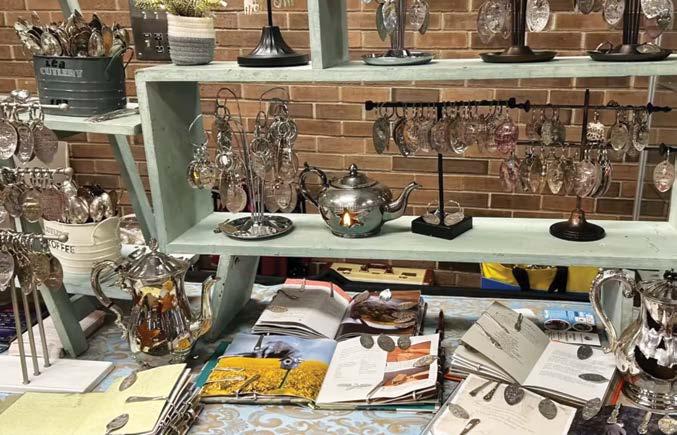





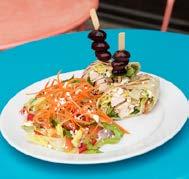

Uniquely-designed jewellery, quilts, housewares from wooden bowls to glass goblets, leather works, bath products and a wide variety of art greet visitors looking to buy something too unconventional for chain store shelves. Depending on the items, prices could vary from as low as $5 to around $500.
One product that went over well with patrons in 2024 was an assortment of dog cookies, the first time pet food was ever sold at the fair. “People were clamoring to get to them,” de Medeiros recalled.
This year, one merchant plans to sell pickled food and a variety of sauces at the fair. “It’s a first for sure, at least since I’ve been doing the fair,” noted de Medeiros.
Creating gift diversity is one goal de Medeiros strives to meet each year. Vendors are screened annually to ensure an even distribution of gift types are available at the fair. “What we try to do is limit the amount of participation in various categories. You’ll only find three or four jewellery people, or three people who do knitting or textile stuff,” said Medeiros. That strategy opens the door for vendors of other unique items to exhibit their products.
Visitors have a choice to check out a number of sites showing off works in St. Albert Place. Up to 40 vendors who pay an entry fee for a spot at the event get to showcase their wares in the main corridor of the complex. Other artists—who are members of the Floral Art Society of St. Albert, St. Albert Painters Guild, St. Albert Paper Arts Guild, St. Albert Potters Guild, and St. Albert Quilters’ Guild—display their work in the nearby Visual Arts Studio. Additional artwork is also available for sale at the WARES store.
Regulars to the fair don’t seem to have a problem seeking out their favourite vendors each year. Some of those merchants, including a leather worker and one vendor who makes items like keychains out of reclaimed spoons, have even made a huge impression on de Medeiros. But the organizer was particularly struck by one woman who makes and sells pysanka—coloured Ukrainian eggs normally trotted out in time for Easter.
“She does quite a few of them and they’re absolutely beautiful,” said de Medeiros. “People love them. And she’s always near the back. We always give her the same spot so people know where to find her.” t8n
Visitors have a choice to check out a number of sites showing off works in St. Albert Place. Up to 40 vendors who pay an entry fee for a spot at the event get to showcase their wares in the main corridor of the complex.
The St. Albert Place Visual Arts Council (SAPVAC), which advocates, promotes, and supports local visual arts, can trace its origins as far back as 1962, when the St. Albert Arts and Crafts Guild was formed. Six years later, the town council provided two portable buildings in Salisbury Park as a home base for the growing arts community.
By 1974, the community continued to expand, warranting a need to create a space to house cultural and civic services. The following year saw the formation of the St. Albert Further Education Council, which handled school classroom art instruction previously administered by the Guild.
That space to combine civic and cultural functions became a reality by 1983, with the opening of St. Albert Place. The facility, which housed the city’s Council Chambers, included a visual arts studio named after potter and instructor Sybil Laubenthal. Additionally, the city created a cultural services department, the first municipality in Canada to do so.
By 1985, the Guild had disbanded, with membership moving towards individual guilds of their own. In its place eventually emerged SAPVAC, a not-for-profit charitable organization that houses the St. Albert Floral Art Society, the St. Albert Painters’ Guild, St. Albert Paper Arts’ Guild, St. Albert Potters’ Guild and the St. Albert Quilters’ Guild. Also included is the Art Gallery of St Albert and the City of St. Albert Cultural Services Department.
(Source: The City of St. Albert)







BY: GENE KOSOWAN
ONE OF THE saddest and most deplorable chapters in Canadian history was the establishment and operation of the residential school system, a joint initiative between Christian churches and the federal government to educate and assimilate indigenous children into mainstream society. But for more than 150 years, it disrupted First Nations, Inuit and Metis cultures, ripped apart families and communities, and inflicted tremendous physical and psychological damage on residents and descendants who still feel the pain from that experience.
Treatment of some 150,000 students at the schools over the years was barbaric, as the residents were cut off from their families, and endured a regimen of arduous chores, a strict curriculum designed to nullify their cultural roots, and harsh discipline to keep the children in line. Roughly 6,000 children died under the care of residential school administrators.
Of the approximately 130 schools that operated in Canada from 1831 to 1996, two of them were located near St. Albert. Here’s a brief timeline of their existence in this region.
Established near the banks of the Sturgeon Valley in 1873, the St. Albert Youville Residential School was an offshoot of a Roman Catholic school that had been housing Metis students for four years in Lac Ste. Anne.
The establishment—also referred to as the St. Albert Orphanage and the St. Albert Boarding School—originally consisted of a log cabin that accommodated seven indigenous students, although construction eventually began on other structures. While run by the clergy, the school also received funding from the provincial government.
Shortly after the turn of the century, Youville expanded to include a four-storey wooden complex complete with classrooms, dormitories and office. In 1909, construction was completed on a three-storey brick building with a basement to accommodate more classrooms and dorms as well as a space for “dietary services.”
During the 1920s, a spike in enrolment at Youville warranted the building of another brick structure for classrooms, dormitories, staff living spaces, dining rooms and a kitchen. Two additional structures for recreation and outdoor dining also sprung up on the premises.
Meanwhile in 1924, The Edmonton Indian School opened near St. Albert in 1924, a reincarnation of a Methodist Church-run industrial school that closed five years earlier in Red Deer. Also known as the St. Albert Indian School, it consisted of a threestorey brick complex complete with classrooms, dormitories, and administrative offices taking up much of the space. It was also outfitted with dining and recreation rooms, kitchen and laundry facilities and a chapel. Additional functions that the building couldn’t contain were housed in a barn.
At its peak during the 1930s, Youville housed more than 250 indigenous residents. While most of them attended the facility, some of them apparently received their education at a public school nearby. During the 1947/48 academic year, 130 students lived on the premises, before the school was permanently shuttered June 30, 1948.
During its first decade of operations, most of the students in the Edmonton Indian School came from areas surrounding the provincial capital, but by the 1930s, more indigenous children were shipped in from northern British Columbia.
The Edmonton Indian School greatly expanded its reach during the 1950s, when more indigenous children arrived from not only B.C., but the Northwest Territories and the Yukon as well,
swelling its attendance to 178 students, an all-time high for the facility. Older residents attended junior and senior high schools nearby until the residential facility boosted its instruction to include Grades 5 to 12 in 1958. Apparently, that endeavour didn’t last very long, as by September, 1960, all of the residential school’s students wound up occupying classrooms at schools in Jasper Place in Edmonton’s west end.
During the 1960s, the United Church was involved in sending indigenous students to the school, but that venture was short-lived when the federal government stepped in to operate the school in 1967. On June 30, 1968, when attendance has shrunken down to 47 residents, the school was shut down.
Nothing remains of the Youville complex. The main building of the Edmonton residential school burned down in 2000, although the site eventually became Poundmaker Lodge, the country’s first aboriginal addictions treatment centre, still operating today. But what hasn’t gone away are the painful memories and recorded anecdotes concerning the fate of many of its residents.
The National Centre for Truth and Reconciliation came up with a list of 47 students who died at Youville and nine who perished under the care at the Edmonton complex, although speculation is rampant that more fatalities are unaccounted for.
One person who could recall first-hand the effects of those tragedies was former Edmonton school resident George Brertton, who eventually became an instructor at Blue Quills First Nations College. He recalled one time when he and classmates had to bury some of the children who died at the school.
“I had a lot of nightmares about that. We had to dig these holes so far down,” said Brertton to the Edmonton Journal in 2003. “I remember yelling and screaming in my sleep because I thought I was going to get buried in one of those holes.”
Just as vivid are the memories of Emma Rayko, who attended the same school. “For eight years I suffered in that damn school,” said Rayko to Lakeland Today in 2020. “You suffer in those schools.... for no reason. You are walking in the hallway, and one staff member is standing there—you are not doing nothing and you get slapped for nothing, and you don’t understand.”
Hoping to foster understanding of what happened to the residents, parties involved in the Indian Residential Schools Settlement Agreement, under the jurisdiction of the federal government, established the Truth and Reconciliation Commission in 2008. Seven years later, the Commission issued several calls to action, while declaring that the actions committed by the government and residential school administrators amounted to what it call a cultural genocide. t8n
Relocating her salon has expanded Thyda Lim’s clientele

BY: PAULA E. KIRMAN | PHOTOGRAPHY: PAULA E. KIRMAN
THYDA LIM PROVES that experience, drive, and dedication are central to success. So, it seems, is the need to reinvent oneself.
The stylist and entrepreneur used to own Suburbia Hair Spa, a high-end salon based in the Shops of Boudreau. She’s since had to reconfigure her marketing at her current shop, Paralela Beauty, which continues to service her regulars as well as seniors at the Careadon Village retirement community at 2 Inglewood Drive.
What hasn’t changed in the range of options offered by Paralela which Lim deftly rattles off: “Hair colouring, cuts, blow-dry sets, perms, extensions and maintenance, manicures, pedicures, waxing, makeup applications, and retail shopping, with the occasional two-step lessons from our beloved apprentices,” says Lim. “We take great pride in keeping our seniors youthful and happy.”
The new location has its advantages, including easily accessible parking and a restaurant in the building. “We offer hot coffee and tea or water,” add Lim. “There is also a TV in our salon so you never have to miss a hockey game for a haircut!”
Rebranding as Paralela Beauty represents a new start for Lim and her three staff members. She recalled the move out of the Shops at Boudreau was an “emotional parting,” although she was excited for what the future had in store for her new direction. “We are grateful for the patience and understanding from all our loyal clients that have shifted seamlessly with us,” she adds. “I will continue to innovate and offer the same quality of service that has always been offered.”
Lim’s road to becoming a stylist and salon owner was driven by a desire to find the right work-life balance. Lim was born in a refugee camp in Thailand, her parents having fled Cambodia during the genocide of the Khmer Rouge, led by Pol Pot in the mid ’70s. “I came to Canada at the young age of four and started life here discovering snow and the public school system for the first time. We started our life as new immigrants in Edmonton,” she recalls.
Starting her own family at 20 meant that Lim did not have the chance to attend university, and chose the beauty industry as the best career option for her. She was hired by The Rock Salon and Spa in St. Albert in 2002 as a receptionist, which became pivotal in Lim’s professional path.
“I remained dedicated to them for 10 years as they had supported me through the challenges that life had presented me,” she says. “Being a part of a progressive team environment and seeing the diversity and fun that came with salon life had me convinced this was my calling. I took as many certification programs as I could to complete my new journey.”
Today, Lim is a Red Seal Hairstylist, and is certified in hair extensions, barbering (including straight razor shaves), makeup applications, waxing, gel nails, and eyelash extensions. She earned her journeyman certificate from Marvel College (now MC College) and received advanced training from the Aveda Academy salon.
Paralela Beauty’s move and rebrand was economically driven. COVID had impacted the beauty industry with more people working from home, and people choosing not to go out for beauty services due to health fears. On top of that was the rising costs of supplies and high rent in the previous location.
“With a large space to operate with hefty financial obligations, there was no room for error,” Lim says.


When the time came to renew the lease, Lim opted to make the move and open in the Careadon Village building.
Over the years Lim has learned that in order to be a successful salon owner, she’s had to assess her relationship with her staff, especially in finding the sweet spot between being a friend and being the boss. “Beauticians are very special people; we are dynamic and personable. Allowing for work-life balance is very important to understand for your employees. I will always allow my staff to leave early for a family event, or take personal days off. Most importantly, I have learned that it is not as easy as you think. This applies to any business. Meditation and grounding myself have been proven methods to overcome mental hardships.”
Lim is also trying to build a team of stylists with the intention of potentially expanding to more locations. “I want to teach our young apprentices to be skillful, classy, and professional,” she notes. “My plan is to extend my reach further than I was able to in the past. I have a lot of knowledge to share with the right team, and with that I will create more salon owners that can bring their visions to life under my guidance.”
While she’s had to relocate her business out of necessity, Lim aspires to make a similar change in her personal life. A former St. Albert resident who currently lives in north Edmonton, she hopes to move back to St. Albert in the future.
“St. Albert has the best clients, of course,” she says. “I am biased since I’ve been here for 22 years as a stylist. I have met some of the most outstanding professionals. I get to hear about the coolest trips, best strategies for life, and the best recipes in town. People are classy here and understand the value of a great stylist-client relationship.” t8n






































EVER SINCE SMARTIES rolled out of the UK-based H.I. Rowntree factory in 1937, folks have come up with clever ways to play with and eventually digest these delicacies. Some sort them based on colour and eat accordingly, many opting to consume the red ones last. Others bake Smarties into other treats, from cakes to cookies.









Fortunately, we won’t ask our readers to be as inventive when it comes to this contest. All we want you to do is determine the weight of this bowl of Smarties in grams. Once you figure that out, write down the answer on this page, whip out your smartphone to click an image of it, then post it on either Facebook or X (tagging #t8n, of course) or direct message us with the attached image instead.




































The person who guesses the right weight or gets closest to the solution wins. If there is a tie, we will randomly draw from those lucky candidates. Prize is available only to St. Albert residents.





























































































































































































